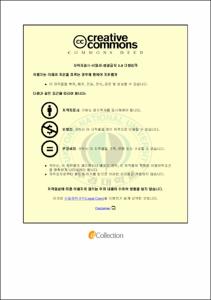Effects of Different Feeding Regimes on the Growth and Compensatory Growth of Juvenile Nile Tilapia Oreochromis niloticus
- Abstract
- Feed and feeding regimes are relevant to any successful commercial aquaculture investments the world over. Feeding cost alone approximates about 55% of any fish farming venture. The number of feeding days per week and frequency of feed administered influences growth rate amongst other factors. In order to reduce waste and increase profitability in any aquaculture venture, the frequency and number of feeding days per week will obviously play a dominant role. Improved feeding strategies will not only increase profit margins but will invariably spare additional time for fish farmers to invest in other spheres of economic activities.This research was conducted to investigate the most appropriate feeding regime per week on growth that could be adopted for juvenile Nile tilapia. The phenomenon of compensatory growth was equally investigated as insufficient information is available relating this specie to feed and compensatory growth.
The juvenile Nile tilapia Oreochromis niloticus were fed using 4 different weekly regimes. Each treatment was in quadruplet and was fed 3 times daily for 4 days, 5 days, 6 days and 7 days per week. At the end of the growth experiment, treatments in duplicates were fed 3 times daily for 7 days per week to investigate the phenomenon of compensatory growth. The results showed that the optimal growth occurs within 5 to 7 weekly feeding days. Juvenile Nile tilapia demonstrated full or complete compensatory capacity as the least fed group grew and caught up with the most fed group of 7 feeding days per week. These results are discussed in relation to earlier works on feeding rates and compensatory growth.
- Issued Date
- 2012
- Awarded Date
- 2012. 2
- Type
- Dissertation
- Publisher
- 부경대학교
- Department
- 대학원 국제수산과학협동과정
- Advisor
- 김창훈
- Table Of Contents
- . Introduction 1
II. Materials and methods 9
2.1. Growth experiment 9
2.1.1. Experimental design 9
2.1.2. Experimental fish 14
2.1.3. Water quality measurements 18
2.1.4. Proximate analysis of juvenile fish 20
2.1.5 .Blood analysis 20
2.1.6. Statistical analysis 21
2.2. Compensation growth experiment 21
2.2.1. Experimental design 21
2.2.2. Experimental fish 25
2.2.3. Water quality measurements 25
2.2.4. Proximate analysis 26
2.2.5 .Blood analysis 26
2.2.6. Statistical analysis 26
III. Results 27
3.1. Growth experiment 27
3.1.1. Net mean weight gain 27
3.1.2. Specific growth rate 36
3.1.3. Feed conversion ratio 39
3.1.4. Blood analysis 42
3.1.5. Proximate analysis 48
3.2. Compensatory growth experiment 50
3.2.1. Net mean weight gain 50
3.2.2. Specific growth rate 56
3.2.3. Feed conversion ratio 59
3.2.4. Blood analysis 62
3.2.5. Proximate analysis 68
IV. Discussion 70
4.1. Growth experiment 70
4.1.1. Net mean weight gain 70
4.1.2. Specific growth rate 72
4.1.3. Feed conversion ratio 73
4.1.4. Blood analysis 74
4.1.5. Proximate analysis 74
4.2. Compensatory growth experiment 76
4.2.1. Net mean weight gain 76
4.2.2. Specific growth rate 77
4.2.3. Feed conversion ratio 78
4.2.4. Blood analysis 78
4.2.5. Proximate analysis 78
V. Conclusion 80
VI. Acknowledgements 82
VII. References 83
- Degree
- Master
- Appears in Collections:
- 글로벌수산대학원 > 국제수산과학협동과정
- Files in This Item:
-
-
Download
 Effects of Different Feeding Regimes on the Growth and Compensatory Growth of Juvenile Nile Tilapia .pdf
기타 데이터 / 762.61 kB / Adobe PDF
Effects of Different Feeding Regimes on the Growth and Compensatory Growth of Juvenile Nile Tilapia .pdf
기타 데이터 / 762.61 kB / Adobe PDF
-
Items in Repository are protected by copyright, with all rights reserved, unless otherwise indicated.